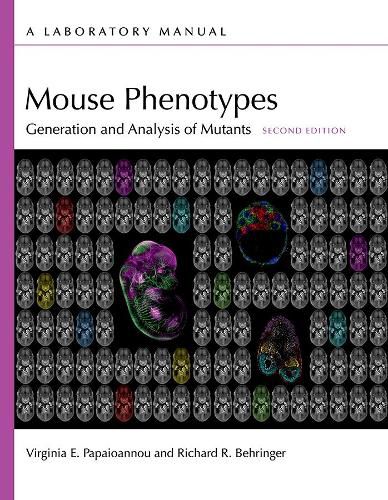Readings Newsletter
Become a Readings Member to make your shopping experience even easier.
Sign in or sign up for free!
You’re not far away from qualifying for FREE standard shipping within Australia
You’ve qualified for FREE standard shipping within Australia
The cart is loading…






In this postgenome era, the large number of mouse mutations available is revolutionizing biomedical research. Large-scale mutagenesis projects have resulted in the modification of thousands of mouse genes and, more recently, with CRISPR-Cas gene editing, generation of custom mutations is easier than ever. The interpretation of mutant phenotypes is critically important for understanding how changes in the genome result in changes in the phenotype. Complex phenotypes resulting from gene manipulation or spontaneous mutation, however, provide a huge analytic challenge. Where does one start with the analysis? How does one dissect the phenotype and begin to understand the molecular and developmental consequences of the genotype? How does one make the best use of the valuable resource that you have developed? Mouse Phenotypes: A Handbook of Mutation Analysis, Second Edition, provides a road map for such analysis. Advice and practical guidance are provided, starting with the planning stages of gene targeting, CRISPR-Cas gene editing, or mutagenesis experiments, through the complete analysis of complex phenotypes, including tips on breeding strategies, studying dominant mutations, and characterizing a mutant mouse with no apparent phenotypic abnormalities. A systematic approach to the analysis, complemented with simple protocols, will help users make a comprehensive assessment of a particular phenotype resulting from a mutation and determine the timing and likely causes of specific developmental failures. Investigators using the laboratory mouse in genetic studies designed to understand mammalian biology will benefit from the authors' experience and advice in analyzing mutant phenotypes.
$9.00 standard shipping within Australia
FREE standard shipping within Australia for orders over $100.00
Express & International shipping calculated at checkout
In this postgenome era, the large number of mouse mutations available is revolutionizing biomedical research. Large-scale mutagenesis projects have resulted in the modification of thousands of mouse genes and, more recently, with CRISPR-Cas gene editing, generation of custom mutations is easier than ever. The interpretation of mutant phenotypes is critically important for understanding how changes in the genome result in changes in the phenotype. Complex phenotypes resulting from gene manipulation or spontaneous mutation, however, provide a huge analytic challenge. Where does one start with the analysis? How does one dissect the phenotype and begin to understand the molecular and developmental consequences of the genotype? How does one make the best use of the valuable resource that you have developed? Mouse Phenotypes: A Handbook of Mutation Analysis, Second Edition, provides a road map for such analysis. Advice and practical guidance are provided, starting with the planning stages of gene targeting, CRISPR-Cas gene editing, or mutagenesis experiments, through the complete analysis of complex phenotypes, including tips on breeding strategies, studying dominant mutations, and characterizing a mutant mouse with no apparent phenotypic abnormalities. A systematic approach to the analysis, complemented with simple protocols, will help users make a comprehensive assessment of a particular phenotype resulting from a mutation and determine the timing and likely causes of specific developmental failures. Investigators using the laboratory mouse in genetic studies designed to understand mammalian biology will benefit from the authors' experience and advice in analyzing mutant phenotypes.